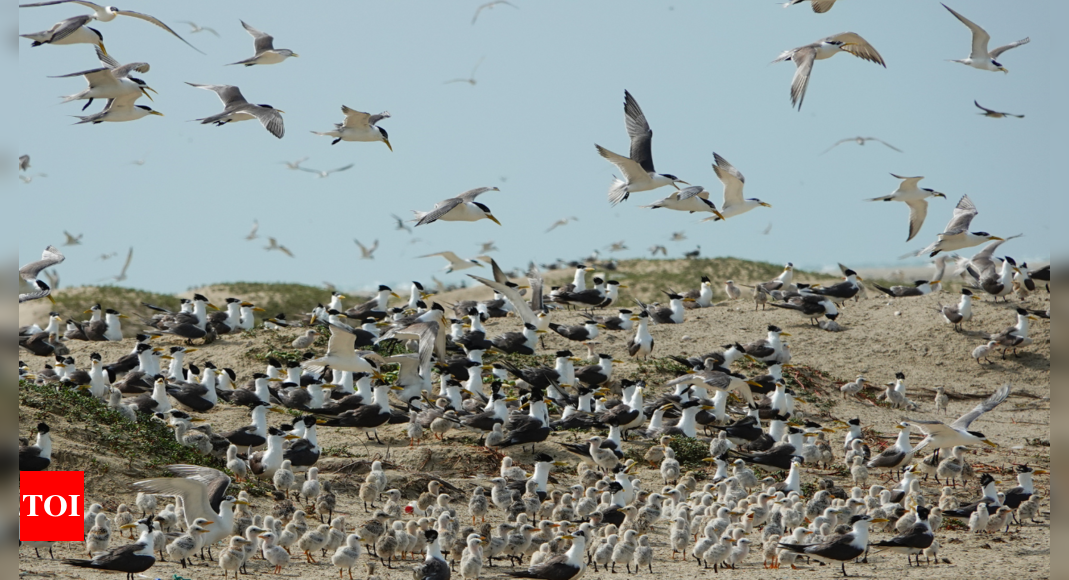Major Seabird Discovery: Large Breeding Sites Found on Gulf of Mannar Sandbars
Researchers Discover Important Seabird Breeding Grounds on Ancient Ram Setu Sandbars
A research team spent eight years studying the sandbars of the ancient Ram Setu, or Adam’s Bridge. They found significant seabird breeding sites, including the first confirmed nests of five tern species, previously thought to be migrants by bird researchers.
Key Findings Published in the Journal of Threatened Taxa
- The findings were published in the international peer-reviewed journal, ‘Journal of Threatened Taxa’.
- The research team included H Byju and H Maitreyi from the Centre of Advanced Study in Marine Biology, Annamalai University, N Raveendran from the Madurai-based Iragukal Amritha Nature Trust, D A Marshal from the wildlife division, Gulf of Mannar Marine Biosphere Reserve, and S Ravichandran from the department of zoology, Government Arts and Science College, Nagercoil.
The Search for Seabirds
The search for seabirds started in 2017-18 when Byju joined veteran researcher S Balachandran from the Bombay Nature History Society for a government-sponsored study in the Gulf of Mannar.
Eight Years of Research Reveal Largest Breeding Sites
- For eight years, this team of researchers, with help from the Wildlife Division of the Gulf of Mannar Marine National Park, made many boat trips to the sandbars to study the seabirds.
- “Our long-term research helped us find one of the largest breeding grounds of seabirds,” said Raveendran.
Ram Setu: A Chain of Sandbars Connecting Rameswaram Island with Sri Lanka
Ram Setu, the chain of sandbars connecting Rameswaram Island with Sri Lanka, is partially in India and Sri Lanka. The sandbars 1 to 7 within Indian territory are mostly isolated due to restricted access. The reserve supports regional endemic breeding species like the Hanuman Plover, rare migratory species such as the Arctic Skua and Pomarine Skua, and unusual vagrants like the Light-mantled Albatross.
Seabirds: Important Indicators of Marine Ecosystem Changes
- Seabirds are important indicators of marine ecosystem changes because of their long lives and dependence on terrestrial breeding habitats and marine food sources, said Maitreyi.
- Seabirds reflect human and environmental impacts, including climate change, fisheries impact, and prey stock availability, supporting marine conservation efforts.
Threats of Poaching and Pollution
The study showed that these seabirds on these sandbars face threats of poaching and pollution. Although they saw signs of poaching from both the Indian and Sri Lankan sides, the presence of many chicks with parents suggests that it was not alarmingly widespread. However, plastic pollution is a concern.
Urgent Conservation Needed Amid Growing Threats
“Indiscriminate dumping of solid waste on the coasts from India and Sri Lanka washes up on these sandbars due to currents,” noted Byju. “We should ideally undertake a cleaning drive to remove the plastic choking the bird habitat. Surveillance on both sides should be strengthened to protect this shared ecological treasure trove,” says Raveendran.



